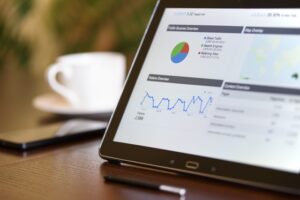 Cloud technology has changed the world in ways even Isaac Asimov could never have predicted. It’s responsible for the emergence of big data, which allows brands to store troves of information they need to run efficiently and more profitably. Of course, the cloud and big data would be useless without the right analytics tools.
Cloud technology has changed the world in ways even Isaac Asimov could never have predicted. It’s responsible for the emergence of big data, which allows brands to store troves of information they need to run efficiently and more profitably. Of course, the cloud and big data would be useless without the right analytics tools.
Many brands use a lot of resources to store their data, but spend almost no time or resources capitalizing off of it. They’re essentially wasting the money they spend on their cloud storage and big data accumulation strategies.
Fortunately, there are a number of ways brands can better analyze their big data. Here are some tips to follow.
Prioritize Accessibility over Volume
Joseph Corvaia, vice-president of EvolveIP, said that many brands will need to continually scale their ability to store big data. “Data retention continues to double and triple year-over-year because [customers] are keeping more of it. Certainly, that impacts us because we need to provide capacity,” Corvaia said.
While he makes a valid point, some brands are compromising their ability to use big data for its intended purposes.
The cloud allows the brands to store terabytes of data on their customers, daily operations and other aspects of their business. However, it isn’t necessarily prudent to keep that much data.
Also Read
Brands don’t benefit by storing as much data as possible. They benefit by being able to easily access the data they need.
A recent report by Aberdeen found that 93% of businesses have significantly increased the amount of database store. Almost half of them didn’t store their data in a structured way, so they can’t easily analyze it when necessary.
The report concludes that “larger datasets can offer deeper and more impactful insights, but also create strain on analytical tools and user skillsets.”
Use the Right Big Data Analytics Platforms
InformationWeek recently discussed one of the quandaries many brands are facing. They’re having more difficulty managing existing data, because volume is significantly increasing. At the same time, stakeholders are pressuring them to mine and analyze their data more quickly than ever.
The only way brands can meet these expectations is to leverage the best big data analytics tools available. Here are some of the analytics platforms they are turning to:
- Apache Hadoop has been used by some of the largest online brands for the past decade. It’s an open source platform, so it’s very defective.
- 1010data is a private cloud-based analytics platform. It’s been used most frequently by financial firms on Wall Street, but the technology is useful for brands in any industry.
- IBM is unquestionably the leader in big data analytics. Brands can use IBM’s DP2 platform to integrate, extract and cleanse their data. IBM also offers a customized advice to clients that don’t want to manage their own analytics.
Big data analytics is constantly evolving. This means that tools being refined every day. Other analytics tools are released, so it’s important to stay on top of them. However, the tools listed above have stood the test of time.
Applications and Protocols for Using Big Data Analytics
It’s easy to discuss the theory of big data analytics. Putting it into practice is a different story. How are brands leveraging big data analytics?
Companies in the financial sector have been taking advantage of big data analytics for several years. For example, companies like Cash Float are heavily dependent on customer data when evaluating applications for people seeking short term loans. They can conduct a more thorough actuarial analysis than ever before.
However, big data analytics doesn’t come without risks. Here are a couple of challenges that brands face:
- Failing to distinguish between correlation and causation. Human beings are wired to look for patterns. Big data creates the temptation to see patterns where they don’t exist.
- Risk of discriminatory complaints. In lending, human resources and other functions, brands need to be careful to avoid allegations of discrimination. They may unwittingly use data that exposes them to these allegations.
- Threat of regulatory penalties. Some data is stringently protected under privacy laws. This is especially true in the healthcare profession, which is heavily regulated under HIPAA. Brands need to understand these laws and follow them carefully.
Big data is a powerful tool and also use in biometrics gun safes. It’s even more valuable with the right analytics tools in your arsenal.
However, it needs to be handled wisely. Every brand should assign a data and compliance officer to make sure it is handled properly.
